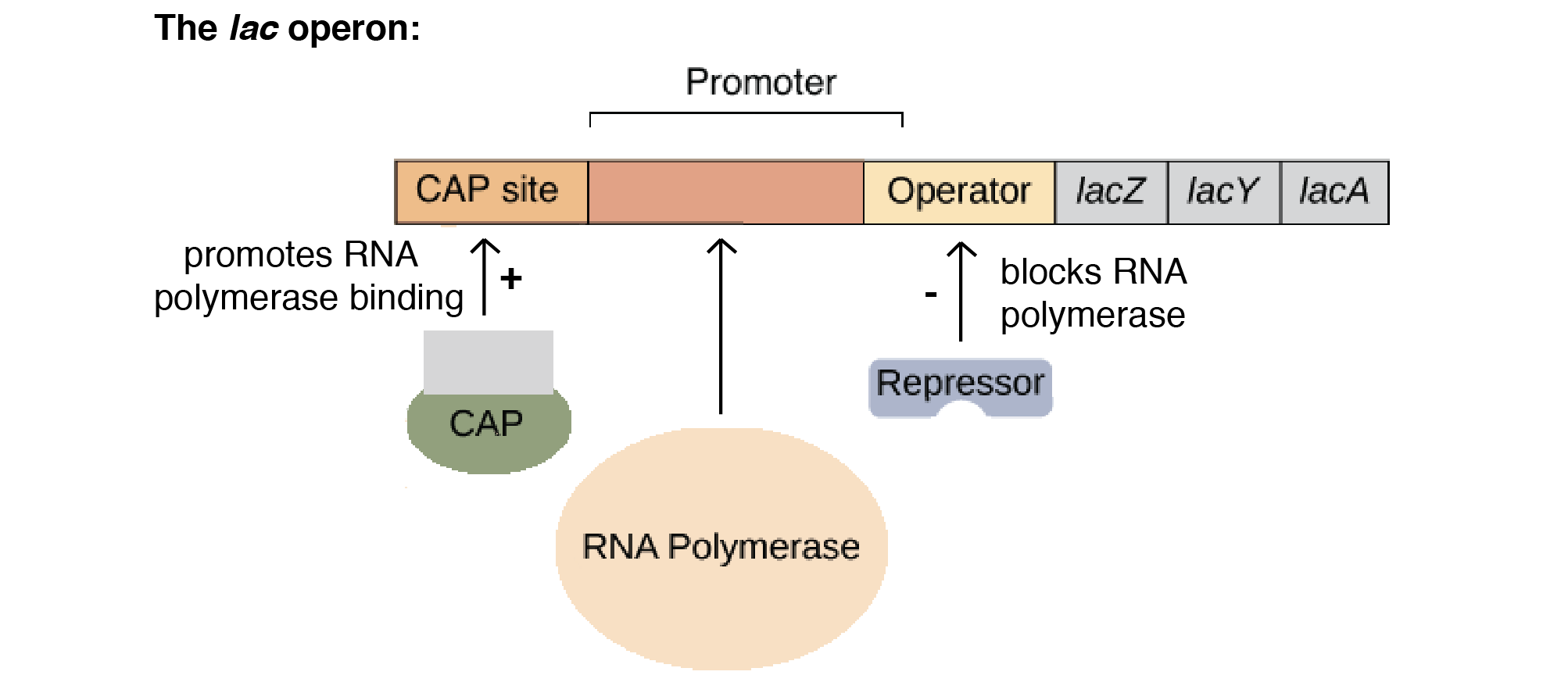Lac operon in E.coli
- The lac segment of E. coli chromosome is known to include 3 genes for enzymes production i.e. Z for beta galactosidase, Y for beta galactoside permease and A for thiogalactoside.
- Beta galactoside permease: Responsible for transport of lactose.
- Beta galactosidase: Responsible for hydrolysis of lactose to galactose and glucose.
- The 3 genes are closely linked and regulated together.
- The genetic information of 3 genes s transcribed into a single mRNA molecule that is subsequently translated into the polypeptide chains of the 3 enzymes.

Steps of lac operon in E. coli
- RNA polymerase attaches to promoter site and then transcription proceeds in 5’ to 3’ direction beginning with operator site (O).
- The regulator site regulates the synthesis of 3 enzymes and produces a repressor protein of 360 AA residue.
- In absence of lactose, repressor protein binds to wild operator (O+) and prevents attachment of RNA polymerase to promoter. Hence, transcription is prevented.
- In Presence of lactose, RNA polymerase binds to repressor and hence preventing it from binding to operator and hence all 3 genes are transcribed.
- Finally, transcription is imitated in the operator site.
- Turning on of lactose operon is done by catabolite receptor protein (CRP) bind to molecules of cyclic adenosine monophosphate (CAMP).
- This enhances RNA polymerase binding and consequent transcription of the lac operon.
- Presence of glucose interferes the production of CAMP and hence halts transcription of the lac operon.